Fiona Ingram's Blog, page 20
June 18, 2022
TV Series Review: The Chelsea Detective
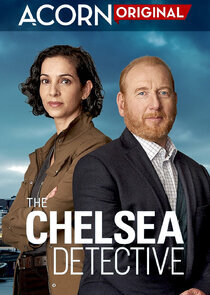
Adrian Scarborough stars as DI Max Arnold, a recently separated police officer who lives on a shabby houseboat while hoping that he’ll get back together with his wife Astrid. He's clever, determined, and perhaps most importantly, he doesn't care about wealth or status when it comes to getting justice. Raised by a local bookshop owner, he's a life-long Chelsea resident – but not part of the elite class of people who make up most of the neighbourhood. He may live in an upmarket area, but crime knows no boundaries and the dark and disturbing elements of the city manifest themselves. Max’s job is to bring criminals to book and see that justice is done. He is partnered with Sonita Henry as DS Priya Shamsie, who is a new mum, back on the beat, and with her own issues at home, most of which are of her own making.
Should you watch it? Definitely! If you enjoyed Midsomer Murders, Grantchester, or any detective series of that ilk, this is right up your alley. The stories are interesting and keep your attention. Nothing seems outlandish or far-fetched and a viewer is not asked to suspend their disbelief. The cast is diverse but there is no shoving it down your throat. The Chief Forensics Officer is played by Sophie Stone, a deaf actress. I really liked how the producers handled this angle because I have seen other shows where there is much fiddling about with sign language and then translating which stretches things out and makes an audience restless. In this series, the actress performs brilliantly and quite naturally asks Max to slow down because she can’t catch everything he is saying.
Adrian Scarborough is one of those actors that ease into the character perfectly. He is a pleasure to watch. The character is no-nonsense, gets on with the job, can be unimaginative at times, but is very appealing. His aunt is played by the inimitable Frances Barber, also a pleasure to watch. She is hilarious. For me, the only sour note was the relationship between Max’s wife Astrid (Anamaria Marinca) and Max. I found Astrid quite bland, and it was hard to believe they had been married. There was just no chemistry. Even much ado about the ownership of a coffee machine failed to convince me. However, a strong supporting cast make this series eminently watchable, and I was delighted to discover that there will be a season two!
June 15, 2022
Book Spotlight: Ignatius and the Swords of Nostaw by DA Mucci
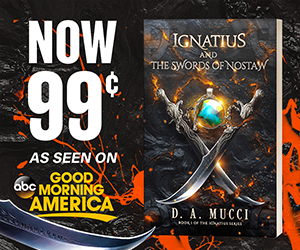
Is there anything worse than high school?
When a clever, peace-making verbal volley failed, and the guy pulled a switch blade, Iggy took off. A locket he wore warmed up. Suddenly, he wasn’t in Susquehanna, PA anymore. Before he could gather his wits…
…someone had tackled him.
Pinned on the ground, his assailant bade him, be quiet. Something was going on just up ahead. A horrifying-looking knight in black armor, and a strange looking creature were locked in battle.
The knight won.
The large dog-bird beast, lay dying. Iggy sensed evil had won. When the man let him up, they eased forward to see if the dog-bird beast was dead.
No. And with its dying words…
…the warrior gave Iggy his swords.
And thus, Ignatius’s adventure began.
“A beautiful read.” — Robin Roberts, as seen on Good Morning America
★★★★★“D.A. Mucci does such a great job of creating a universe that is entirely fantastical yet believable and relatable. Ignatius and the Swords of Nostaw has an almost Harry Potter-ness to it in that we are guided into this world through the eyes of a character who is learning of it the same as the reader and who is a character very similar to its target audience. But, it is also entirely different in a good way. I have honestly not taken to a fantasy novel as much as this one in quite a long time. The author is an excellent storyteller and writer.” — Kate Leboff
★★★★★ “Right from the start this story is breathtaking in how much detailed surrounding the kingdom of Skye… a once luscious and beautiful place that had been filled with animals and people. Now it’s a kingdom with no beating heart. In desperate for a hero, a teen named Iggy finds himself becoming the hero these people need. Mastering a set of growing magic skills in a challenge but its mastering the skills in handling the towering secrets that are claiming Skye is something else altogether. A wondrous journey in a finely painted world. Highly recommended.”—Lori Goodreads review
★★★★★“The author managed to create quite intriguing magical world full of fantastic beasts, some of which are not what you typically expect from beasts – they are mighty warriors, living in seclusion, whose abilities in battles are legendary. The world building is really nice and takes your imagination to amazing places. Combine this with an awkward, introvert and insecure boy who gets swallowed into the greatest adventure of his life, one which is too big for him to understand at a time, but he grows and shows his worth and true power. Definitely recommend this book.”—Lia Goodreads review
Book Excerpt:
The towering stone Castle Maol, the unrivaled seat of power in the Kingdom of Skye, sat inland almost bereft of life.
Once known for its inspirational beauty, Skye’s forests and meadows were more barren than green now, enveloped by stillness instead of bustling wildlife. Lakes and waterways once teeming with marine life lay stagnant. Most of those who lived here survived under gray clouds of despair.
Several of the eldest knew of the prophecy that would return the land to its prior golden age and quietly hoped it was true.
Only a handful knew the secret that would allow the prophecy to come true. They refused to speak of it.
About the Author

Months of self-induced isolation to protect loved ones from exposure to Covid-19 led Emergency Medicine Physician David Mucci to create a fantasy world as an outlet to manage pandemic stress and support his own mental health. The resulting novel, Ignatius and the Swords of Nostaw (St. Bart’s Publishing, October 2021), tells the tale of an impossible mission led by an unlikely hero.
This is the coming-of-age story of 15-year-old Ignatius, “Iggy”, who is thrown into a world of unknowns, transported to a medieval world filled with magic. Based on research of myths and legends, Mucci created The Kingdom of Skye, the setting for Iggy to develop special powers and accomplish quests to fight evildoers and find his way home.
According to Mucci, Iggy must learn to trust a diverse set of characters but also learn to believe in himself and grow; much like as a medical provider, Mucci had to trust himself, trust his colleagues and learn how to adapt during the pandemic.
The first in a planned 5-part series, Ignatius and the Swords of Nostaw is YA fantasy suitable for both teens and adults as it gently reminds readers that they are responsible for their own destiny, and that sometimes the most unexpected people can be the best teachers. At 67 years old, writing a YA Lit fantasy series, Mucci is also proving that there is no limit for being creative. “The only limitation is the one that you place on yourself and on your imagination,” says Mucci.
Visit his website at https://damucci.com or connect with him on Facebook.
June 14, 2022
Book Spotlight: Blue Haven by Lisa King
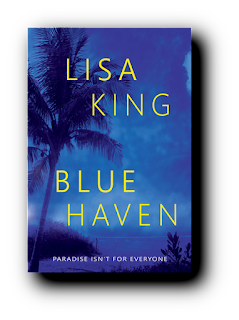
Welcome to Blue Haven, the world’s most lucrative condo corporation—so exclusive that only five lucky residents live in this lush, tropical paradise, housed in a top-secret location.
Among them is twenty-five-year-old Aloe Malone, an introvert and former waitress who traded bussing tables for lengthy sleep-ins, ocean dips, Michelin-star restaurants, spectacular sunsets, and unlikely new friends—all thanks to a spurious lottery win.
Life’s good. Damn good. That is, until Aloe discovers a journal, seemingly left by a past resident named Eloise whose entries are both sad and evoking, Aloe quickly suspects there’s more to Blue Haven than meets the eye. Her suspicions are confirmed when visions arise, gruesome hallucinations she can’t understand, followed by a strange yet familiar man lurking in places he shouldn’t. Something’s wrong. Or maybe it’s all in her head. Regardless, she vows to uncover the truth.
Except someone wants to keep her quiet, and it’s the last person she ever suspected.
Blue Haven is a science-fiction thriller that explores what innovation can achieve—and destroy—despite the best intentions. King’s imaginative world building, and use of moral ambiguity make this page-turning novel a thought-provoking thrill that’s impossible to put down.

About the Author
Lisa King is a Canadian fiction author and researcher whose work on veteran mental health has been published in numerous academic journals. She holds degrees in psychology and neuroscience, both from Western University. Aside from writing, she enjoys family outings, ample coffee, and unapologetic napping. She lives in London, Ontario with her husband, daughter, and wonky-eyed cat.Her latest book is the adult science fiction / psychological thriller, Blue Haven.You can visit her website at www.authorlisaking.comor connect with her on Twitterand Instagram.
June 10, 2022
Book Spotlight: The Urban Boys by KN Smith
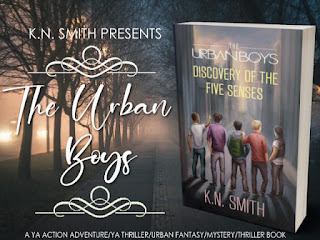
Welcome or unwelcome. Fate has arrived.
"A captivating and poetic tale of mystery, fantasy, and reality tied together by action!" 5-stars, Lars Jackson, Amazon Customer
A suspenseful incident in a forbidden preserve heightens the senses of five friends. Sight, sound, touch, taste, and smell become super-gifts that forever change the world. But furious battles confront the boys as they try to understand their sensory super powers in a race to save mankind. With light beings and mysterious strangers complicating their plight, can the boys defeat the evil Druth before it’s too late? Get prepared for the twisting and grinding of this award-winning, action-adventure story — an edge-of-your-seat narrative for young and mature readers alike.
"Brilliantly crafted and written!" - Megan King, Indie Book Reviewers
"An energetic adventure debut with stellar action sequences. Smith's writing is intelligent and often lyrical. Her exuberant prose never fails to dazzle." - Kirkus Media
"Author K.N. Smith uses her mastery of the written word to weave an entrancing, yet powerful tale of adventure that keeps you turning pages in an unquenchable desire to find out what happens next." - Publishers Daily Reviews
About the Author

K.N. Smith, winner of the "Best of" in the category of "Outstanding Young Adult Novel" at the Jessie Redmon Fauset Book Awards, is an author and passionate advocate of literacy and arts programs throughout the world. Her lyrical flair sweeps across pages that twist and grind through action-adventure and urban fantasy in edge-of-your-seat narratives. K.N. has over twenty-five years' experience in communications and creative design as an award-winning consultant. Reading is still her foremost hobby. K.N. inspires people of all ages to reach their highest potential in their creative, educational, and life pursuits.
Her latest book is the YA Action Adventure/YA Thriller/Urban Fantasy/Mystery/Thriller DISCOVERY OF THE FIVE SENSES (The Urban Boys Book 1).
You can visit her website at www.KNSmith.com or connect with her on Facebook.
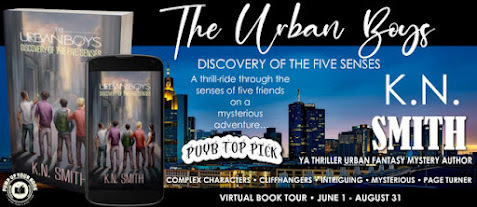
June 8, 2022
10 THINGS YOU MIGHT NOT KNOW ABOUT M.N. GRENSIDE
1) My start in business was with Lloyd’s of London as a Broker specializing in insurance against Kidnap and Ransom and Expropriation of Assets by unfriendly Governments or Regimes. After 5 years I made the switch to The Muppets with Jim Henson.
2) One morning I showed up to work at Jim Henson’s house which doubled as our office and found a man sitting with his feet up on my desk. I assumed he was Jim’s driver and asked him to take his feet off and wait outside. Jim then came into the room and said he was not going to the studio and didn’t need a driver. “The chauffeur” was actually Steven Spielberg who had come for a meeting. Spielberg had the last laugh though. Six months later while queueing outside Beverly Hills Hotel valet parking, he leaned over to ask if he could give me a lift and should he wear his chauffeur’s hat!
3) At 25, I was invited to lunch at the classic Hollywood haunt, Chasens in Los Angeles. My host was a well-known producer. As we entered, the Maître d’ came up to my host to say Frank Sinatra was having a birthday lunch and extended an invitation for him and his guest to join his party. Mr. Sinatra was the epitome of graciousness and introduced himself, his wife Barbra Marx and the long table of famous people. The last person was a bald gentleman who resembled Mr. Magoo.
“Last but not least Mark, this is Max Factor.” I lost it... “Max Factor,” I cried out. “There’s a Max Factor?!” Mr. Sinatra turned to my host “Who is this English Limey who doesn’t blink at a table full of Hollywood Royalty but freaks out at meeting Max Factor?”
4) I co-owned a music Management company that launched Neneh Cherry and her multi-million selling debut album, Raw Like Sushi.
5) I have dual nationality, UK and Swiss, speaking fluent French and some German and Italian. My first TV Series, 72 action half hours called Crossbow was the adventures of William Tell and so a nod to my ancestry.
6) I was Executive Producer on a number of TV series and mini-series, the last being Treasure Island with Eddie Izzard, Donald Sutherland, Philip Glenister, and Elijah Wood for Sky and NBC Universal.
7) I am a Co-founder of a leading seed to shelf CBD supplier, Dragonfly Biosciences. Our product is sold worldwide. In the UK it is in Harrods, Boots, Tesco, Sainsbury, Ocado and Pharmacy chains such as Day Lewis and Cohen’s.
8) I have scuba dived since I obtained a license at 16. My teachers were the crew of Jacques Cousteau’s Calypso during their down time. Many years later I did a show with him and John Denver in Moscow.
9) I have been fortunate enough to visit 120 countries. However, I still want to see Antarctica.
10) Film and TV by its very nature is a collaborative venture. I wrote my book, Fall Out because I wanted to create something that I can only argue about with myself! I set out to create a franchise of thrillers set in the film industry, a world everyone is fascinated about and which I have hands on experience. I enjoy writing and worked with a number of writers in production. Furthermore, I write a blog www.andanotherthing.com which is now in about 40 countries.
ABOUT THE BOOK
“A page-turning, jaw-dropping thriller of action and surprise. A riveting debut.” – Damien Lewis, international bestselling author

An LA screenwriter is killed shortly after completing his latest script, FALL OUT – a thriller destined to be a blockbuster but written with a secret double purpose. Echoing events from the past, the screenplay is sent to a very specific group of people and will change their lives forever. All are connected to a movie that had abruptly stopped shooting in the jungles of the Philippines years before. FALL OUT exposes the truth about a conspiracy and murder that led to a half-a-billion-dollar fortune for a select few. Follow the story of Producer Marcus Riley, who sets out on an increasingly dangerous quest to get FALL OUT made. From a powerful agent’s office in Hollywood, hidden treasures in Belgravia and a remote chalet in the Swiss Alps to murder at the Cannes Film Festival, Marcus teams up with designer Melinda (Mako) de Turris as they and the other recipients of the screenplay are pursued by an assassin from the past.With clues cleverly concealed in the screenplay, Marcus and Mako unravel a lethal puzzle that for some will bring death, others the truth and ends in a cave with a shocking secret…
About the Author
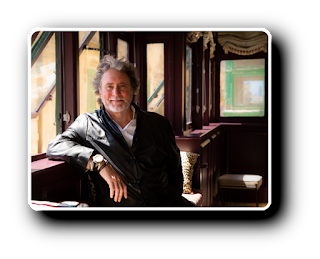
Mark Grenside , born and raised in London, began his working career straight out of school at Lloyds of London, specializing in Kidnap, Ransom and Extortion Insurance. At 25 it was time for a career change and to dump the suit and tie, so he started his media career working for Jim Henson and The Muppets©. From that moment on he has been involved in Entertainment and nearly every aspect of it. In addition to his love of cooking, an unhealthy amount of time and money is lavished on a collection of classic cars that he has raced all over the world. He enjoys risk and has parachuted in New Zealand, scuba-dived in the Pacific, hang-glided in the Himalayas and even tobogganed down the Cresta Run. In nearly every case chasing after his wife who is utterly fearless!
He is now writing the follow up to Fall Out, entitled The Bastion. In addition, he writes a humorous blog with subscribers in more than 40 countries. www.andanotherthing.com
You can visit his website at www.MNGrenside.com and his blog at www.AndAnotherThing.comor connect with him on Twitter,Facebook and Goodreads.
June 6, 2022
The Inspiration Behind Writing Promise of the Heart by Susan Berry
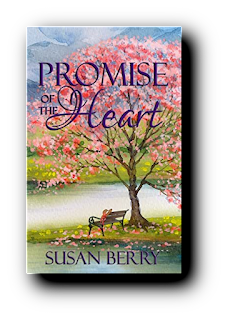 “Promise of the Heart is the third book in the Moments of the Heart series and the continuation of the romantic love story between an independent farm girl turned city dweller and a very wealthy vineyard owner. Without giving away too much, our heroine, Maggie must now decide how much she is willing to give of her heart and for how long while navigating a dangerous game of cat and mouse. I was inspired to write the series after a visit to Picha’s strawberry farm in Washington State. I was captivated by the idea of a close-knit family facing life’s struggles together and seemed like the perfect backdrop for a romance story.” – Susan Berry
“Promise of the Heart is the third book in the Moments of the Heart series and the continuation of the romantic love story between an independent farm girl turned city dweller and a very wealthy vineyard owner. Without giving away too much, our heroine, Maggie must now decide how much she is willing to give of her heart and for how long while navigating a dangerous game of cat and mouse. I was inspired to write the series after a visit to Picha’s strawberry farm in Washington State. I was captivated by the idea of a close-knit family facing life’s struggles together and seemed like the perfect backdrop for a romance story.” – Susan Berry After a distasteful first meeting, and a rocky start to their romance, Maggie Kinsley has been happily married to Desmond for the last eleven months. And although she was often alone when he traveled for business, she rather enjoyed how he passionately greeted her when returning home. So when he received a letter naming him as executor of a property that belonged to a deceased family friend and had to leave for a few weeks, Maggie should have been content as she kissed him goodbye. But there was something about the whole thing that made her uneasy. Why was Desmond so evasive with her when she asked him about the previous owner. And why had he insisted she not tell anyone of his plans to stay on the property. Maggie soon found the answers to her questions were more than just a woman's intuition, but rather something that not even her wildest, darkest fears could have foreseen.
“I so enjoyed the long-awaited final book to the trilogy the author so lovingly created. Maggie's story has a wonderful ending and she'll be in my heart and mind for a long time.” - Amazon

About the Author: Since Susan Berry was a young girl, she loved to write. Her imagination was filled with stories that she couldn’t write down fast enough. But it wasn’t until her grandmother had given her a Harlequin romance novel to occupy her time on a long, boring car ride, that she fell in love with reading romance. The excitement of the characters first meeting, and the dance of the heart that followed, left Susan frantically turning pages. From that day on, Susan spent her free time with her beloved grandmother, reading the latest novels they’d retrieved from a used book store, or the local second hand shop. That reading eventually turned into the writing of her own romance novels. Novels filled with characters who have not yet found love, but eventually find a way to overcome romantic troubles with humor, wit, and the consumption of lots and lots of chocolate.
Susan’s latest book is the clean romance suspense, Promise of the Heart.
You can visit her website at https://www.SusanBerryauthor.com or connect with her on Twitter, Facebook and Goodreads.
May 31, 2022
Happy Book Birthday for Lisa King's Blue Haven!

We're thrilled to announce the release of Lisa King's Blue Haven (The Story Plant) today! To help celebrate, we are asking our readers if you can please pretty please pick up a copy at Amazon and come back and tell us how you liked it? Or, leave a review at Amazon!
Congratulations, Lisa, on your adult scifi new release, Blue Haven!





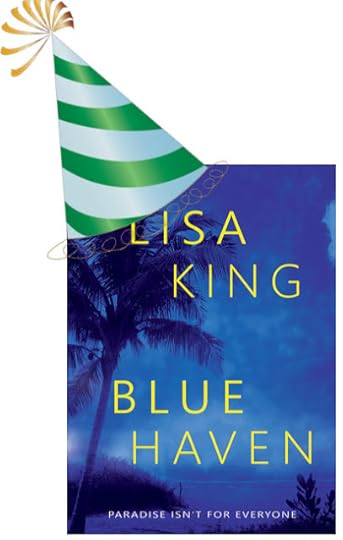
Welcome to Blue Haven, the world’s most lucrative condo corporation—so exclusive that only five lucky residents live in this lush, tropical paradise, housed in a top-secret location.
Among them is twenty-five-year-old Aloe Malone, an introvert and former waitress who traded bussing tables for lengthy sleep-ins, ocean dips, Michelin-star restaurants, spectacular sunsets, and unlikely new friends—all thanks to a spurious lottery win.
Life’s good.
Damn good.
That is, until Aloe discovers a journal.
Seemingly left by a past resident named Eloise whose entries are both sad and evoking, Aloe quickly suspects there’s more to Blue Haven than meets the eye.
Her suspicions are confirmed when visions arise, gruesome hallucinations she can’t understand, followed by a strange yet familiar man lurking in places he shouldn’t. Something’s wrong. Or maybe it’s all in her head. Regardless, she vows to uncover the truth.
Except someone wants to keep her quiet, and it’s the last person she ever suspected.
Blue Haven is a science-fiction thriller that explores what innovation can achieve—and destroy—despite the best intentions. King’s imaginative world building and use of moral ambiguity make this page-turning novel a thought-provoking thrill that’s impossible to put down.
Book Information
Release Date: May 31, 2022
Publisher: The Story Plant
Soft Cover: ISBN: 978-1611883206; 336 pages; $26.95; E-Book, $7.49
Book Trailer https://youtu.be/DgnqxcZLRcg
Amazon: https://amzn.to/3LVsZB0
Barnes & Noble: https://bit.ly/3waPpHv
Indigo: https://bit.ly/3MWRayO
IndieBound: https://www.indiebound.org/book/9781611883206
Book Depository: https://bit.ly/3kNK4kk
About the Author

Lisa King is a Canadian fiction author and researcher whose work on veteran mental health has been published in numerous academic journals. She holds degrees in psychology and neuroscience, both from Western University. Aside from writing, she enjoys family outings, ample coffee, and unapologetic napping. She lives in London, Ontario with her husband, daughter, and wonky-eyed cat.
Her latest book is the adult science fiction/psychological thriller, Blue Haven.
You can vist her website at www.AuthorLisaKing.com or connect with her on Twitter and Instagram.


May 27, 2022
10 Things You Might Not Know About MOON DEEDS by Palmer Pickering
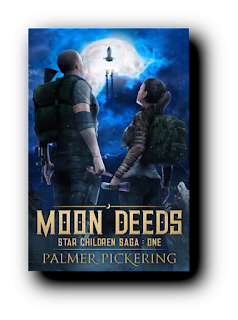
1. The Moon Deeds story starts on Earth in the year 2090.
2. The two protagonists are 20-year-old twins, Cassidy and Torr. Cassidy is studying plant-spirit medicine, and Torr is a soldier (and a lucid dreamer).
3. Their mother is a shaman. Currently, she practices plant-spirit medicine. Their father is a trader and merchant and has a special connection to animals.
4. Cassidy and Torr inherited deeds to land parcels on the moon that they inherited from their Great-Aunt Sophie. There is a strange connection between Great-Aunt Sophie and the President of the World Government (Global Alliance), but it is not clear what that connection is.
5. Prior to the start of the Moon Deeds adventure, on January 2, 2038, a strange-looking craft showed up on the landing field of Rothera Station spaceport in Antarctica. The landing party were humanoid, not so different from Earthlanders. They had a working knowledge of the Globalish language, and it had taken them some effort to prove they were from another planet—Thunder Walker, which orbits Errai in the Cepheus constellation. At that time, Antarctica was a neutral zone. Representatives from each country were sent there to meet with the aliens, who turned out to be diplomats and scientists. Several more Cephean craft arrived in Antarctica over the course of two years.
6. By 2090, the Cephs are backing a world army on Earth and are supplying it with advanced weaponry.
7. The only thing able to defend against the alien technology is magic.
8. At this point in time, the moon has been colonized. There are two interstellar spaceports, and the colonies have the ability to supply their own oxygen and water by mining moon soil and lunar ice. The colonies are still dependent on Earth for food and other critical goods such as medicines.
9. The third POV character, Ridge, is an inventor and runs one of the interstellar spaceports and the largest mine on the moon.
10. Palmer Pickering’s inspiration for Moon Deeds was a gag gift from her brother of a deed to a land parcel on the moon. It professes to be legit, and therefore Palmer may indeed own land on the moon.
About the Author
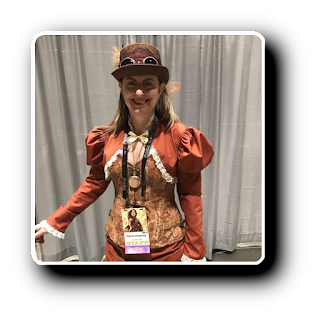
Palmer Pickering has been writing fiction since she was eight. She received her BA in American Studies from Wesleyan University, with concentrations in Religion and Race Relations. She currently works in Silicon Valley in the gaming industry and high tech. In addition, Palmer holds a certificate in Chinese Acupressure, is a certified solar panel installer, and studied Tibetan Buddhism with the 14th Dalai Lama. She lives and writes in the magical redwood forest of the Santa Cruz Mountains, California. Her latest book is the scifi fantasy for adults, Moon Deeds: Star Children Saga Book One.You can visit her website at www.MythologyPress.com or connect with her on Twitter , Facebook , Instagram and Pinterest .
May 24, 2022
Book Spotlight: First Bite by Avery Daniels
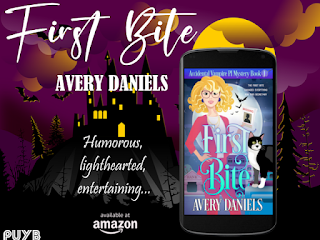
In 24 hours, Misty Summers had the worst date of her life, was bitten by a vampire, and her PI boss may close his business as he goes through a divorce. Looking on the positive side, she decides to use her new vampire assets and become the private investigator to keep her income. She doesn’t know what her future holds, but it can’t be any worse! When she starts following up on a missing woman’s case, she finds herself in the middle of murder.
Book Information
Release Date: May 1, 2022
Publisher: Blazing Sword
Ebook: ASIN; 290 pages; $2.99
Amazon: https://amzn.to/3OmzDl4
Book Excerpt:
After several songs had passed with us oblivious to any other living being, just wrapped up in each other, we stepped outside to stroll in the golden glow of a nearly full moon before heading to our room. We walked hand-in-hand until we were surrounded by the landscaping around us and the shimmering moonlight through the trees. Mason stopped and wrapped his muscular arms around me.
“I am so grateful for you in my life. I hope I never take you for granted or forget to tell you how important you are to me.” He kissed me, sweet and slow. He drew me closer, and the kiss deepened. I slid my hands up his chest and around his neck. My head and heart were spinning.
Then I felt something brush my foot. Don’t spoil the moment LaMere, focus on the kiss. I succumbed to the kiss again. It had probably been a rabbit startled out of its hiding spot, right? After another moment of blissful necking, my foot was brushed again before a hand - yes, a hand - grasped my left ankle. I let out a yelp and jumped. Mason pulled back and looked into my eyes.
“A hand just latched onto my ankle!” I don’t know why I was whispering, whoever owned the hand knew they had me in their grasp.
We shifted and looked down to see an arm in a soiled white blazer reaching out from the bushes along the pathway. The hand at the end of the arm was attached to my ankle. I shook my foot, and the hand slipped away. Mason released me, took a hold of the arm, and dragged Merritt, face up, out from the foliage. He had an ancient looking arrow of wood protruding from his chest and blood drenched his shirt. Mason bent down and placed two fingers to his throat.
Merritt’s head twitched, and he breathed out a few words, “It’s the curse. I didn’t believe it. The curse got me.” And he seemed to deflate like a balloon leaking air until he went flat, like the animating force had left him.
About the Author

Avery Daniels was born and raised in Colorado, graduated from college with a degree in business administration and has worked in fortune 500 companies and Department of Defense her entire life. Her most eventful job was apartment management for 352 units. She still resides in Colorado with two brother black cats as her spirited companions. She volunteers for a cat shelter, enjoys scrapbooking and card making, photography, and painting in watercolor and acrylic. She inherited a love for reading from her mother and grandmother and grew up talking about books at the dinner table. Her latest book is the paranormal cozy mystery, First Bite .
You can visit her website at http://avery-daniels.com/. Connect with her on Twitter, Facebook, Goodreads, BookBub, and Bingebook.
Sign up for her newsletter at www.tinyurl.com/2p952mcv.
May 23, 2022
Book Spotlight: Thunder on the Moor by Andrea Matthews
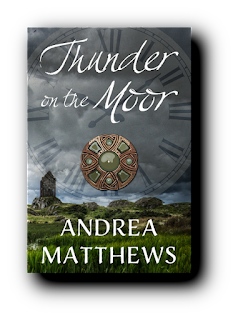
Maggie Armstrong grew up enchanted by her father’s tales of blood feuds and border raids. In fact, she could have easily fallen for the man portrayed in one particular image in his portrait collection. Yet when her father reveals he was himself an infamous Border reiver, she finds it a bit far-fetched—to say the least—especially when he announces his plans to return to his sixteenth-century Scottish home with her in tow.
Suspecting it’s just his way of getting her to accompany him on yet another archaeological dig, Maggie agrees to the expedition, only to find herself transported four hundred and fifty years into the past. Though a bit disoriented at first, she discovers her father’s world to be every bit as exciting as his stories, particularly when she’s introduced to Ian Rutherford, the charming son of a neighboring laird. However, when her uncle announces her betrothal to Ian, Maggie’s twentieth-century sensibilities are outraged. She hardly even knows the man. But a refusal of his affections could ignite a blood feud.
Maggie’s worlds are colliding. Though she’s found the family she always wanted, the sixteenth century is a dangerous place. Betrayal, treachery, and a tragic murder have her questioning whether she should remain or try to make her way back to her own time. To make matters worse, tensions escalate when she stumbles across Bonnie Will Foster, the dashing young man in her father’s portrait collection, only to learn he is a dreaded Englishman. But could he be the hero she’s always dreamed him to be? Or will his need for revenge against Ian shatter more than her heart?
About the Author

Andrea Matthews is the pseudonym for Inez Foster, a historian and librarian who loves to read and write and search around for her roots, genealogical speaking. She has a BA in History and an MLS in Library Science and enjoys the research almost as much as she does writing the story. In fact, many of her ideas come to her while doing casual research or digging into her family history. She is the author of the Thunder on the Moor series set on the 16th century Anglo-Scottish Border, and the Cross of Ciaran series, where a fifteen-hundred-year-old Celt finds himself in the twentieth century. Andrea is a member of the Romance Writers of America, the Long Island Romance Writers, and the Historical Novel Society. Her latest book is the historical time travel romance, Thunder on the Moor.
You can visit her website at www.Andrea-Matthews.comor connect with her on Twitter, Facebookand Instagram.



